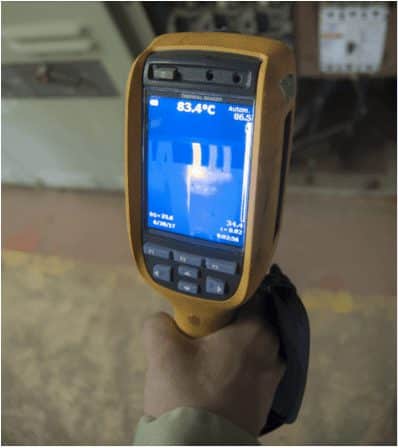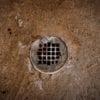
Buying a home is a large purchase and usually a place many people will stay in for a long time. You want to know that everything is going well in the home so having a home inspection is important. Even though it is not required, it is always highly recommended.
There are things that we cannot see with the naked eye so hiring a company that uses thermal imaging as part of their home inspection is a plus. However, some companies don’t use this or they charge extra so you will want to ask if it is something you desire to have.
Let’s take a look at why this is important, difference from a regular home inspection, why it is useful, colors on an infrared camera, mandatory fixes, and when to call a professional.
Why This is Important
Thermal imaging finds surface temperatures and can show thermal anomalies. It can also show a surface temperature that differs from what is expected. It’s upon further investigation with other tools that indicate leaks, pests, and electrical issues. As mentioned, not all companies use this service.

How This is Different From a Regular Home Inspection
A thermal imaging inspection involves using a FLIR (Forward Looking Infrared) camera, Infrared Camera (IR), or videos to check the outside or inside of a building or home. It looks for water and moisture that may be inside the walls. This is an area an inspector cannot see without opening up the walls or without using this type of technology.
This also makes a home inspection even better because an inspector will notice that something is happening in the home, be able to report it appropriately, and investigate more.
Using Thermal Imaging to Conduct a Home Inspection is Useful
Detection of Moisture in the Ceilings and Walls
Using this type of technology allows an inspector to see there are issues on the surface. Then, the inspector can have a look inside the walls, floors, and also the ceiling. On the screen, it shows the difference between moisture areas and dry areas and also areas where insulation may be missing.

Plumbing in a Thermal Imaging Home Inspection
The thermal imaging can scan the plumbing and see where there may be a leak. It allows the inspector to find heat and temperature anomalies and investigate more.
EIFS (Exterior Insulation and Finish Systems) and Stucco Inspections
These inspections are difficult if not almost impossible to do without a thermal imaging camera. For example, rot can be found behind the stucco with a FLIR camera or other thermal imaging device. This would not be possible with the naked eye.
Insects That Are Wood Destroying
Did you know that the infrared camera can pick up active nests? They radiate heat and then the infrared camera captures it. This allows our home inspection team to investigate further.

Electrical Issues
A home inspection that uses thermal imaging can also find the electrical issues in a home. In the picture above, the camera is pointing at the electrical box to see if there are any issues. These would be issues such as circuit breakers that need replacing or overloaded circuits.
The HVAC Unit During a Thermal Imaging Home Inspection
A thermal imaging inspection also looks at the HVAC unit to ensure it is hooked up correctly and functioning properly. If you happen to notice your bill increasing, there could be an insulation issue. It can also find air-conditioner compressor leaks.
Roof Leaks
When an inspector uses a thermal imaging camera in the evenings he can tell that the roof has released its heat and see where there are issues.
Structural Defects
This camera can find wet basements, missing insulation, mold, and other structural defects in the home that can also lead to energy loss.

Energy Loss
Broken seals in double-paned windows or places where the air is escaping on sliding doors can show up too with thermal imaging.
Colors on the Infrared Camera
The infrared camera most common colors are white, red, yellow, and light colors for warmer to hot areas. The blue to black and darker areas are cooler.
The colors represent temperature differentials. Look at the example above, this could be showing a lot of air loss in the attic areas and windows on the front right side. The inspector will have an idea from the outside what might be going on indoors and further, inspection is needed. Additionally, depending on the settings on the camera, the colors may differ.
Mandatory Fixes After the Thermal Imaging Home Inspection
After the inspection, anything that is safety-related is required to be fixed.
When to Call a Professional
When you are shopping for a home inspection company, look for one that does thermal imaging inspections, if that is something important to you. As mentioned earlier, not all do so you will want to find one that does. The ones that do offer it are trained and use it to inspect further and not as a diagnosing tool.
Companies have been using these cameras for over 10 years and even though they are expensive, many inspectors use them. They help the inspector to find issues on the surface and know what to investigate further and fix.
Conclusion
Many companies use thermal imaging for their home inspections. This is because they want to find all the issues the first time and be as accurate as possible.
It is important you speak with your home inspector and ask if they use thermal imaging. In addition, ask how they use it in their inspections, and what their certifications are for thermal imaging.
We conduct thermal imaging with our home inspections in the greater Atlanta area. Questions for us? Leave us a comment below!



